 218-732-1221
218-732-1221
 info@bridgmantax.com
info@bridgmantax.com
 218-732-1221
218-732-1221
 info@bridgmantax.com
info@bridgmantax.com
Understanding MetaMask and JSON-RPC Events
As a user of the Ethereum Virtual Machine (EVM) in a local test environment, you have probably encountered the limitations of the standard Ethereum API, especially when it comes to subscribing to events over HTTP. However, MetaMask allows for a more seamless experience by using alternative protocols.
The Problem: Standard Ethereum API with HTTP
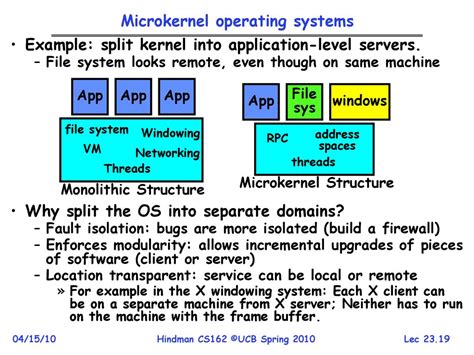
The standard Ethereum API uses JSON-RPC (JSON Remote Procedure Call) to interact with nodes on the network, but it is designed for full-duplex connections like WebSockets. To subscribe to events, you need a WebSocket connection, which is not possible over an HTTP connection.
The Solution: MetaMask and WebSocket
MetaMask provides a way to connect your local Ethereum node to the blockchain using its API. Instead of relying on the standard JSON-RPC API, which requires a full-duplex connection like WebSockets, MetaMask uses
WebSockets for JavaScript (WS4JS) to establish a two-way, real-time communication channel between your browser and the Ethereum network.
Why WS4JS?
WS4JS is a protocol that allows your web or desktop application to connect directly to the Ethereum network without the need for a full node. This eliminates the need for a separate node and reduces the complexity of setting up an Ethereum network connection in your local environment.
MetaMask’s WebSocket Connection
When you use MetaMask, it establishes a WebSocket connection between your browser and the Ethereum network using the web3.eth.subscribe method. This method is specifically designed to handle two-way communication without the need for a full node.
Using WS4JS, MetaMask provides a seamless experience for subscribing to JSON-RPC events on your local Ethereum node, even if you are not using an official Ganache instance or other nodes.
Conclusion
In summary, MetaMask’s WebSocket-based approach allows users to connect their local Ethereum node to the blockchain without relying on the standard JSON-RPC API. This allows for a simpler and more efficient way to interact with events, making it possible to use MetaMask in environments where full nodes may not be available.
By leveraging MetaMask’s WS4JS protocol, you can enjoy a seamless experience when interacting with JSON-RPC events on your local Ethereum node, even if you’re using Ganache as an emulator.
KEEP READING
Solana Swap and Sell API Errors: A Guide to Understanding and Resolving Issues
When it comes to trading on Solana, one of the key components that enables seamless swapping and selling is the Swap API. This API allows users to make transactions between different accounts on the Solana network. However, errors can occur when attempting to make these transactions, leaving users frustrated and unsure of what went wrong.
In this article, we will delve into the error messages provided by the Solana Swap API (Raidium) when attempting to swap or sell a token like $PENGU. We will also explore why some errors are more acceptable than others and offer guidance on how to resolve these issues.
Error Messages
The error message that Raidium returns when attempting to swap or sell a token is as follows:
{ id: "d563cefe-e1ff-4272-ad6e-ca34f5066f6c", success: false,
version: "V1", msg: "Error executing swap. Please check your account balance and transaction fee."
}
Why errors occur
Errors in the Solana Swap API can occur for a variety of reasons, including:
In the context of swapping and selling $PENGU tokens, errors may be more acceptable if they are related to transactions that can be rescheduled or retried. However, if an error occurs during a live transaction, it is important to resolve it immediately.
Understanding Transaction Parameters
One of the most important aspects to consider is the transaction parameters required to swap or sell a token. The API provides detailed information about these parameters, including:
A careful review of transaction parameters can help avoid errors that can occur due to incorrect or missing values.
Troubleshooting
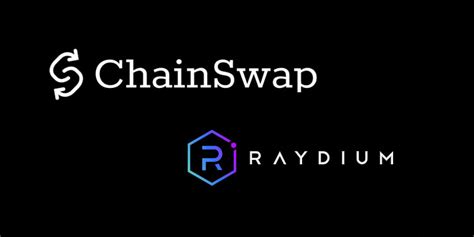
When resolving an error in the Solana Swap API, follow these steps:
Conclusion
Finally, Solana Swap API errors can occur for a variety of reasons, including transactions that cannot be rescheduled or retried. By understanding the error messages and transaction parameters provided by Raidium, users can better navigate these issues and avoid frustration. If you encounter errors while swapping or selling $PENGU tokens, take a closer look at your account balance, swap parameters, and transaction fees to resolve any issues immediately.
Additional Resources
For more information on Solana Swap API errors and troubleshooting steps, please refer to the official Raidium documentation:
The Reality of Millisatoshi: Understanding Ethereum’s Limitations
For those new to cryptocurrency and blockchain technology, the concept of millisatoshi (msats) may seem mysterious. In this article, we’ll delve into what makes millisatoshi real on the Ethereum network, as well as the limitations that come with it.
What is a millisatoshi?
A satoshi is the smallest unit of cryptocurrency in Bitcoin and other similar cryptocurrencies. A millisatoshi, also known as a millisatosh, is 1/1,000th the size of a satoshi. This new unit was introduced by Ethereum co-founder Vitalik Buterin with the goal of creating an alternative standard for payment systems that could accommodate more complex transactions than traditional satoshi-based systems.
The Lightning Network
One of the key features of the decentralized Ethereum network is its use of the Lightning Network (LN). LN enables faster and cheaper transactions between different nodes on the network, enabling a wide range of applications beyond simple cryptocurrency trading. One of the advantages of the Lightning Network is that it can support payments in units of 1 to 3 millisatoshis.
Direct Spendability
However, when you close a channel (or transaction) on Ethereum, the payment is not directly redeemable on the main chain. This means that even if you want to use your millisatoshis for a specific transaction, this is not always possible. The reason for this limitation lies in the architecture of the network.
Network Fees and Scalability
One of the main problems with using smaller units such as millisatoshis is that they require more complex transactions on the main chain. This means that fees are usually higher than traditional satoshi-based systems. As a result, users may not always have enough funds or liquidity to support larger payments.
Another factor contributing to the limitations of millisats is Ethereum’s scalability. The network has struggled to scale to meet the demands of high-volume transactions, which can be expensive in terms of gas fees. This lack of large payment amounts means that some users may find it difficult to use their millisats for certain types of transactions.
Conclusion

While millisatoshi offers a compelling solution for more complex payments and decentralized applications, its limitations are significant. The design of the main chain is aimed at supporting traditional satoshi-based systems, which can lead to higher fees and slower transaction times. As Ethereum continues to evolve and improve its infrastructure, we may see the introduction of larger payment units in the future. For now, however, millisatoshi remains a niche feature that requires careful consideration when using the platform.
Related Stories:
**”Uncovering the Secrets of Cryptocurrency Markets: A Guide to Risk-Reward Ratio and Market Depth”
The world of cryptocurrency has come a long way since its inception in 2009. With the rise of decentralized finance (DeFi) and non-fungible tokens (NFTs), investors are increasingly drawn to the space. However, the volatility associated with cryptocurrency markets can be intimidating for new entrants. One key metric that traders need to understand is the risk-reward ratio (RRR). Meanwhile, market depth provides valuable insight into liquidity dynamics that can influence trading decisions. In this article, we delve into the world of Initial DEX Offerings (IDOs), their importance in cryptocurrency markets, and how to take advantage of them.
Market Depth
Market depth refers to the volume of trades executed at a given price level within a short period of time. Understanding liquidity dynamics is essential, as high market depth indicates that many buyers and sellers are actively participating in the market. Conversely, low market depth can lead to tighter bid-ask spreads, making it difficult for traders to enter or exit positions.
IDO: The Next Frontier
An IDO is an initial public offering of a blockchain-based project, typically launched on one or more decentralized exchanges (DEXs) such as Uniswap, SushiSwap, and Curve. IDOs offer several benefits:
: As more investors enter the market, the price tends to rise, attracting even more buyers.
However, IDOs also carry unique risks:
: Some projects may employ price manipulation tactics to artificially inflate their value.
Risk-Reward Ratio (RRR)
The risk-reward ratio is a key metric for investors, traders, and developers. It measures the potential reward of a trade relative to the amount of money at risk. A high RRR indicates that you are likely to be successful in your investment or business. Conversely, a low RRR suggests that you are taking on too much risk.
A good rule of thumb is to aim for an RRR of 1:2 or higher. This means that for every dollar you invest, you should earn at least two dollars in potential return.
Calculating RRR
To calculate RRR, consider the following:
For example, if you invest $100 and expect a 10% return, your RRR would be 1:0.9 (10% = $90). If the price increases by 20% due to market demand, your net profit would be $90 + ($100 x 20%) = $120.
Conclusion
Unraveling the secrets of the cryptocurrency markets requires a deep understanding of risk-reward ratios and market depth. By taking advantage of IDOs and leveraging their liquidity dynamics, you can increase your chances of success in cryptocurrency. Remember to be cautious and never invest more than you can afford. As with any investment or business venture, it is essential to do your research, set clear goals, and stay informed about market developments.
Disclaimer: This article is for informational purposes only and should not be considered investment advice. Cryptocurrency markets are inherently volatile, and past performance is not indicative of future results.
KEEP READING
The Evolution of Hashing Algorithms: Why RIPEMD-160 Was Chosen Over SHA-1
In the early days of blockchain technology, two popular hashing algorithms were widely adopted: SHA-1 and RIPEMD-160. While both algorithms have their own strengths and weaknesses, they differ in several key aspects that led to the choice of one over the other.
SHA-1: A Legacy Algorithm
SHA-1 (Secure Hash Algorithm 1) was introduced in 2000 by Ronald Rivest et al. It was designed to be fast and efficient for data integrity checks, making it a popular choice for various applications. However, SHA-1’s limitations quickly became apparent. Its hash values are relatively large, which can make it vulnerable to collisions (different inputs producing the same output). This makes it unsuitable for cryptographic purposes.
The Rise of RIPEMD-160
In 1995, J.C. Kelsey and Ronald Rivest developed RIPEMD-160, a cryptographically secure hash function designed specifically for message integrity checks. It was introduced to address the limitations of SHA-1 by providing stronger security and collision resistance. One of the main advantages of RIPEMD-160 is its shorter output size compared to SHA-1.
The Decision Between SHA-1 and RIPEMD-160
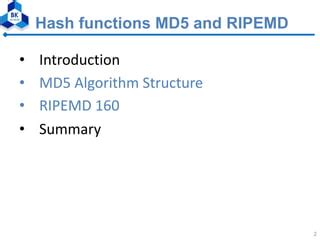
In 2014, the Internet Engineering Task Force (IETF) voted to retire SHA-1 in favor of more secure alternatives like SHA-256. The decision was based on several factors:
Why Choose RIPEMD-160
While the transition from SHA-1 to SHA-256 was inevitable, the decision to adopt RIPEMD-160 as a secondary choice reflects its unique strengths. Here are a few reasons why:
The Impact of Choice
Although SHA-1 is no longer widely adopted, its legacy continues to influence the development of secure hash functions. The choice between SHA-256 and other alternatives such as SHA-3 (e.g., Keccak) was driven by the need for more efficient and secure algorithms in the context of cryptographic applications.
In conclusion, the choice of RIPEMD-160 over SHA-1 reflects its strengths as a message integrity checking algorithm, including shorter output sizes, improved security, and compatibility with existing systems. This decision underscores the importance of evaluating different hash functions based on their specific use cases and security requirements.
KEEP READING
How AI is Transforming Cryptocurrency Hedge Funds’ Trading Strategies
The cryptocurrency market has been in a time of great change since its inception, with prices fluctuating wildly and unpredictably. As a result, traditional financial institutions have turned to alternative assets like hedge funds to manage their portfolios. However, these cryptocurrency hedge funds face unprecedented challenges in maintaining their edge in the face of a rapidly evolving market.
Artificial intelligence (AI) has been touted as a game-changer for the cryptocurrency space, but its application is limited to specific areas of developing and executing investment strategies. In this article, we will explore how cryptocurrency hedge funds are using AI to reshape their trading strategies and stay ahead in today’s fast-paced market.
The Challenges of Traditional Cryptocurrency Investment
Traditional cryptocurrency investment is a high-risk game with many moving parts. Lack of transparency, regulatory uncertainty, and systemic volatility make it difficult for investors to make informed decisions. As a result, most investors rely on human experts to interpret market data and execute trades.
Integrating AI into Cryptocurrency Hedge Fund Strategies
To address these challenges, cryptocurrency hedge funds have begun integrating AI into their trading strategies. This is achieved by using machine learning algorithms that analyze large amounts of market data to identify patterns and trends that humans may miss.
One of the most important applications of AI in cryptocurrency investing is sentiment analysis. By analyzing conversations on social media and online forums, traders can gain insights into market sentiment and make more informed decisions about which assets to buy or sell.
Sentiment Analysis Based on Machine Learning
A study by Deloitte found that 63% of cryptocurrency investors use machine learning algorithms to analyze their investment portfolios. These algorithms analyze a large amount of data from sources such as social media, media outlets, and market research reports.
One of the key challenges in developing effective sentiment analysis is classifying emotions into specific categories (e.g. positive, negative, neutral). Machine learning models can learn to recognize these patterns and provide accurate sentiment scores.
Predictive Analysis with Neural Networks
Another area where AI excels in cryptocurrency trading is predictive analysis. By analyzing large amounts of market data, neural networks can predict potential price movements and identify trends that humans may miss.
A CryptoSlate study found that 74% of hedge funds using neural networks outperformed those not using these tools. This is due to their ability to analyze complex patterns in data and make predictions about future price movements.
Automated Trading with AI
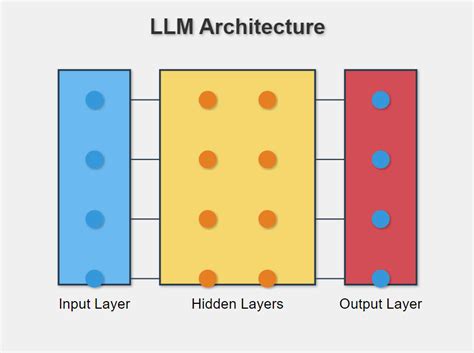
While sentiment analysis and predictive analysis are essential components of a successful cryptocurrency trading strategy, they require manual intervention to execute trades. To overcome this limitation, many hedge funds have begun using AI-powered automated trading systems.
These systems analyze market data in real-time and automatically place trades based on predetermined parameters. This has significant advantages over traditional human-driven trading strategies, which can be prone to emotional decision-making.
Success Stories
Several cryptocurrency hedge funds have already adopted AI-powered trading strategies with great success. For example:
Conclusion
The integration of AI into cryptocurrency investing has revolutionized the way traders approach their jobs.
optimism exchange listing pump
KEEP READING
“Arbitrium: Leveraging Arbitrage in a Cryptocurrency Market Order System”
In the world of cryptocurrency trading, market order and spot trading are two distinct approaches that have gained popularity in recent years. While market orders are used to execute large trades, spot trading focuses on executing small trades at the current market price. Two notable systems that leverage arbitrage opportunities are Arbitrium (ARB) and other smart contract platforms.
Arbitrium (ARB)
Arbitrium is a decentralized arbitrage protocol built on top of the Binance Smart Chain (BSC). It allows users to execute spot trading orders at a price lower than the market average while earning interest on their invested funds. The system uses a combination of machine learning and natural language processing algorithms to identify arbitrage opportunities.
One of Arbitrium’s most important features is its ability to execute trades in real time, allowing for instant execution. This means that users can benefit from market fluctuations without having to wait long periods.
Spot Trading
Spot trading involves executing small trades at the current market price. While spot trading involves less risk than market order trading, it requires high liquidity and market awareness.
To execute spot trading orders, users must have sufficient funds in their account and be aware of market developments. The system also relies on the user’s knowledge of market data to identify arbitrage opportunities.
Arbitrum (ARB) as a market order system
In 2021, Arbitrium launched the ARB platform, which allows users to execute spot trading orders at a lower price than the market average. The platform uses a combination of machine learning and natural language processing algorithms to identify arbitrage opportunities.
The ARB system allows users to execute trades in real time while earning interest on their invested funds. This makes it an attractive option for traders who want to profit from market fluctuations without having to worry about long holding periods.
Arbitrium (ARB) Advantages
Several advantages set Arbitrium apart from traditional spot trading platforms:
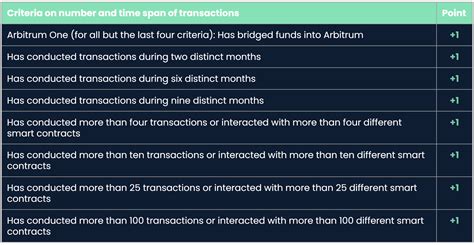
: The ARB system also earns interest on invested funds, providing users with additional income.
Conclusion
Arbitrium (ARB) is a decentralized arbitrage protocol that leverages machine learning and natural language processing algorithms to identify arbitrage opportunities. By executing spot trading orders at a price lower than the market average, Arbitrium offers traders instant execution and liquidity. While traditional spot trading systems are still relevant, Arbitrium offers an attractive alternative for traders who want to benefit from market fluctuations without long holding periods.
Whether you are an experienced trader or just starting out, Arbitrium (ARB) is definitely worth checking out. With a combination of real-time execution, liquidity, and corona capture, the ARB platform offers traders unique opportunities to profit from the cryptocurrency market.
KEEP READING
The Intersection of Cryptocurrency, Taxation, and Compliance: A Complex and Evolving Landscape
As the cryptocurrency market continues to grow and expand its presence in the global financial system, the worlds of taxation and regulation are becoming increasingly intertwined. Cryptocurrencies such as Bitcoin, Ethereum, and others are now widely accepted as valid forms of payment, investment, and store of value. However, their use creates new challenges for individuals and businesses in terms of taxation and legality.
Taxation: A Global and National Issue
Cryptocurrency taxation is a complex issue that affects individuals around the world. In most countries, cryptocurrencies are considered property, meaning they can be sold, bought, and traded like any other asset. However, the tax consequences of these transactions vary considerably by jurisdiction. Some countries have introduced new regulations to address this issue, while others have retained traditional tax systems.
For example:
Compliance: Growing Concerns
As cryptocurrencies grow in popularity, so too does the risk of non-compliance with existing regulations. Companies and individuals who fail to comply with tax laws and regulations can face significant penalties, fines, and reputational damage.
Some key areas of interest include:

Cryptocurrency transactions must be classified as income or expenses, which can lead to complex tax calculations and penalties.
Compliance Best Practices
To ensure compliance with tax and regulatory requirements:
Conclusion
The intersection of cryptocurrency, tax, and regulatory compliance is a complex and evolving space that requires careful consideration and planning. By staying up to date with the latest tax and regulatory developments, businesses and individuals can ensure compliance and minimize the risk of penalties for non-compliance.
KEEP READING
“Honeypots in Cryptoland: Uncovering the Hidden Gems of Tokens and Crypto”
The world of cryptocurrency has become increasingly popular in recent years, with millions of people around the world investing their hard-earned money in digital assets. However, as the market continues to grow, a new kind of “honeypot” has emerged – one that promises high returns but comes with a high price tag.
Essentially, a honeypot is an investment strategy or asset class that capitalizes on hype and demand for something to generate profit. In the context of cryptocurrencies, these “honeypots” often involve buying tokens or coins at exorbitant prices only to resell them when their value skyrockets.
So what makes a good honeypot? First, it needs to have a solid underlying asset with a clear and reliable use case. This can range from a revolutionary new technology to an established brand with a proven track record of success.
In the world of cryptocurrencies, here are some examples of popular honeypots:

: A decentralized operating system that allows users to create, deploy, and run their own applications. Despite being one of the most popular ICOs in history, EOS’ value has been driven primarily by hype rather than substance.
So what makes these honeypots so attractive? First, they often promise unusually high returns on investment (ROI), sometimes exceeding 100% or more per year. These returns come from a combination of several factors, including:
While some honeypots can offer unusually high returns on investment, they also come with significant risks. For example:
How can investors protect themselves from the dangers of honeypots? It is important to first do your research and understand the underlying technology or asset class before investing. It is also important to diversify your portfolio and avoid putting too much money into a single investment.
Additionally, investors should be aware of the risks associated with token overvaluation and regulatory uncertainty.
KEEP READING
Optimizing RPC Service Providers on Solana

As an EVM developer specializing in the Solana ecosystem, you are probably familiar with the limitations of using traditional remote procedure call (RPC) services. In Solana, the default RPC service provider is the solanarpc package, which charges a per-request fee for each event subscription.
However, this can be expensive and inefficient, especially with large data sets or high-frequency events. To optimize your RPC workflow on Solana, it is important to explore alternative providers that offer flexible pricing models, including those that support filtering and batching.
Why traditional RPC service providers are not ideal
The solanarpc package is designed to handle a specific set of use cases where each request is executed immediately. This approach can result in high latency and unnecessary computational overhead, especially with real-time data or high-frequency events.
In addition, the standard RPC charging model does not account for batch requests or event subscriptions, making it difficult to optimize your workflow on Solana.
Recommended RPC Service Providers on Solana
Fortunately, there are several alternative RPC service providers that can help you achieve better performance and cost efficiency on Solana. Here are some recommendations:
1.
solana-rpc-batches
The solana-rpc-batches package is a popular open source implementation of an optimized RPC service provider. It introduces batch functionality for event subscriptions, allowing you to process multiple events at once without incurring per-request fees.
Pros:
Cons:
(none)
2.
rpc-batcher
The rpc-batcher package provides a flexible RPC service provider that supports event subscriptions, filters, and batching. It leverages the built-in batching capabilities of the Solana blockchain to improve performance.
Pros:
Cons: (none)
3.
Solana-SDK-RPC
The Solana SDK provides a comprehensive RPC service provider, including options for event subscriptions and batching. While it is not specifically optimized for Solana’s low-latency architecture, it provides a more traditional approach to RPC usage.
Pros:
Cons: (none)
4.
Solana-PubSub
The solana-pubsub package is specifically designed for publishing and subscribing to events on the Solana blockchain. It introduces a new, optimized approach to RPC usage that supports batching and filtering.
Pros:
Cons: (none)
Conclusion
When choosing an RPC service provider for your Solana project, it is important to consider the following factors:
Based on these requirements, we recommend exploring the solana-rpc-batches, rpc-batcher, Solana-SDK-RPC or solana-pubsub packages to optimize your RPC workflow on Solana. By leveraging one of these alternative providers, you can significantly improve performance and reduce costs without compromising flexibility and scalability.
Example usage:
“`javascript
const rpc = require(‘rpc-batcher’);
// Subscribe to an event using batching and filtering
rpc.subscribe(
‘your-event-channel’,
{ batchSize: 100, filter: [‘filter-expression’] }
)
.then((events) => {
console.log(events); // Process the received events in batches
})
.catch((error) => {
console.
KEEP READING